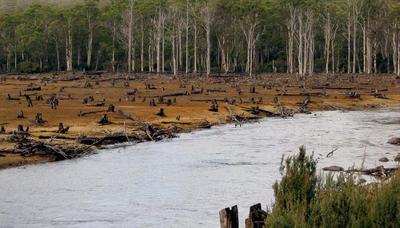The Ocean, origin of life on Earth
The Ocean and Climate Platform was established from an alliance of non-governmental organizations and research institutes, with support from the UNESCO Intergovernmental Oceanographic Commission on June 10th 2014 during the World Ocean day. It is the international Ocean and Climate think tank, gathering over 70 organizations for the purpose of highlighting scientific expertise and supporting ocean and climate issues advocacy before politicians, decision-makers and the general public. Today the Platform includes scientific organizations, universities, research institutions, non-profit associations, foundations, science centers, public institutions and business organizations, all acting to bring the ocean to the forefront in climate discussions.
As Long as there is Plankton!
The ocean is home to a population called plankton. Invisible to the naked eye, it is formed by microscopic organisms that flow with the ocean currents. It represents more than 95% of marine biomass and is characterised by an extraordinary diversity: viruses, bacteria, microalgae, reproductive cells, fish larvae, micro-crustaceans, etc.
A part of the plankton, phytoplankton, also called microalgae, behaves just like plants: through photosynthesis, it absorbs carbon dioxide and produces more than 50% of the oxygen we breathe.
Two main mechanisms transfer the carbon dioxide (CO2) from the atmosphere to the ocean. The most important phenomenon is physical: about nine-tenths of atmospheric carbon dioxide is transferred to the ocean by simple dissolution of the gas into surface seawater which is then transported by ocean currents to the deep layers of the ocean.
The second mechanism, which represents 10% of the accumulation of carbon in the oceans, is related to biology: phytoplankton, suspended in the sunlit ocean surface layer, takes part in the carbon cycle by producing organic matter via photosynthesis. This plankton is considered as a «lung» for the planet, comparable to forests on land: indeed it absorbs CO2 and produces oxygen (O2). Over geological timescales, photosynthesis has led to the oxygenation of our atmosphere.
When plankton is not consumed and dies, it sinks to the bottom of the sea where it accumulates, forming thick layers. The carbon-rich organic matter contained in this sediment can eventually evolve into oil or gas. Phytoplankton species with calcareous shells are also involved in carbon sequestration as they store calcium carbonate (CaCO3) in their shells. These sediments then develop into limestone. The cliffs of Dover are a typical example.
This biodiversity is represented by thousands of species of algae and planktonic animals. It is the first link in the marine food chain and is vital to all fisheries and to the global economy which depends on it. However, knowledge about the global ecosystem is very patchy. The way it works, its biological importance and economic value are yet poorly known by policy makers, as well as the general public.
The ocean therefore plays a major role in climate regulation as it acts as a carbon pump and source of oxygen thanks to plankton. Nonetheless this pump is increasingly affected by global climate change, leading to important questions that arise. What is the resilience of plankton communities? How vulnerable is this sophisticated climate machine?
The role of plankton biodiversity in climate regulation therefore represents one of the major issues for the global climate.





